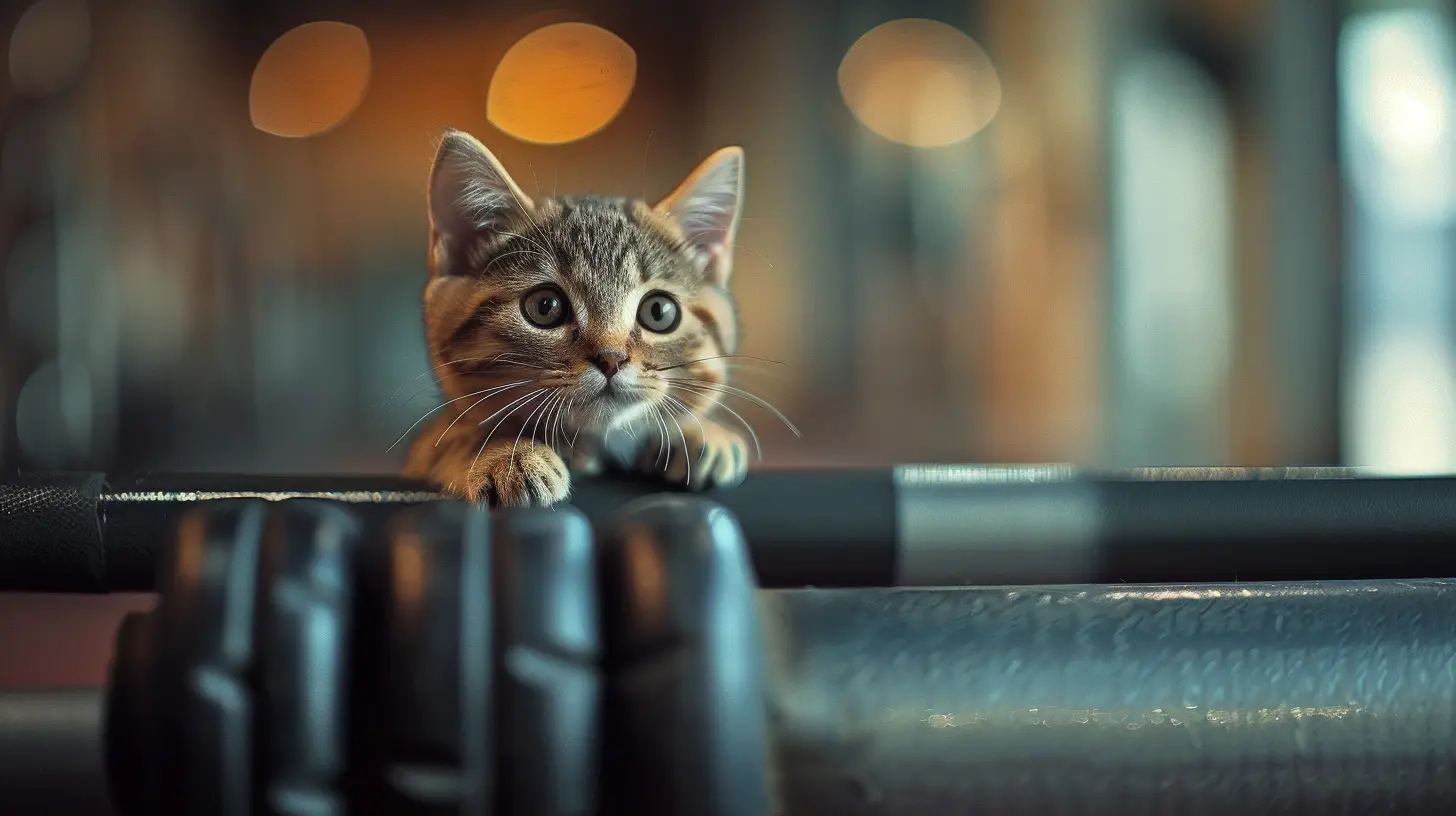Cardio for Weight Loss: What You Need to Know
15 November 2025
Let’s be honest—losing weight isn’t always as straightforward as we wish it were. You might’ve heard the phrase “just move more and eat less,” but if it were that easy, we’d all have six-pack abs and endless stamina, right?
One of the go-to strategies people lean on when starting their weight loss journey is cardio. But what exactly is cardio, and how does it help burn fat? More importantly, how should you use it for the best results?
In this deep dive, we’re going to break it all down. We'll talk about why cardio works, the best types for shedding fat, how often to do it, and how to avoid common mistakes. Whether you’re a total newbie or just need a little refresher, sit back (or better yet, get on a treadmill), and let’s get started.
What Is Cardio, Anyway?
Cardio—short for cardiovascular exercise—is any kind of physical activity that raises your heart rate and gets your blood pumping. Think running, cycling, swimming, dancing, stair climbing, or even a brisk walk.Your heart’s a muscle. When you do cardio, you're giving it a workout. The more you train it, the better it gets at pumping blood and delivering oxygen to your body, which helps you feel more energized and alert.
But beyond that boost in stamina, cardio also burns calories—and that’s where weight loss comes into the picture.
How Does Cardio Help With Weight Loss?
Here’s the deal: weight loss boils down to a simple formula—calories in versus calories out. To lose weight, you need to burn more calories than you consume. That’s called a calorie deficit.Cardio helps you burn more calories. Some types of cardio can torch hundreds of calories in a single session. Do that consistently, and you’re setting the stage for gradual, sustainable weight loss.
But wait—it’s not just about racking up numbers on your fitness tracker. When paired with a balanced diet and strength training, cardio becomes a turbo booster for shedding fat while preserving lean muscle.
Types of Cardio: What's Best for Burning Fat?
Not all cardio is created equal. Each type has its own benefits, and choosing the right one depends on your goals, fitness level, and what you actually enjoy doing (because let’s face it—if you hate it, you probably won’t stick with it).1. Steady-State Cardio (LISS)
LISS stands for Low-Intensity Steady-State cardio. This is your classic jogging, walking, or cycling at a steady, moderate pace.It’s easier on the joints and great for beginners. It slowly burns calories and is fantastic for building endurance.
Think of LISS like a slow-burning candle. It may not light up the room instantly, but it gets the job done over time.
2. High-Intensity Interval Training (HIIT)
HIIT involves short bursts of intense activity followed by brief rest periods. For example, 30 seconds of sprinting followed by 30 seconds of walking—repeated for 15-30 minutes.It’s like lighting a firecracker. You ignite a huge calorie burn in a short period. Plus, there’s the “afterburn effect” (aka EPOC), where your body continues to burn calories long after your workout ends.
HIIT is time-efficient, super challenging, and great for blasting fat and improving cardiovascular fitness quickly.
3. Moderate-Intensity Cardio
This lives between LISS and HIIT. Think of a solid 30-45 minutes of jogging, a dance class, or swimming at a strong pace.Perfect if you’re looking for a balance between intensity and duration. It’s challenging, but not totally breath-stealing like HIIT.
Frequency: How Often Should You Do Cardio?
Here’s a golden question: how much cardio do you really need?Well, that depends on your goals.
- For general health: 150 minutes of moderate-intensity or 75 minutes of high-intensity cardio per week.
- For weight loss: Aim for 4-5 sessions per week, combining both LISS and HIIT.
But—and this is important—don’t go overboard. More isn’t always better. Overtraining can lead to burnout, fatigue, and even muscle loss. Rest and recovery days are just as crucial as your workout days.
Be kind to your body. It’s doing the best it can.
What About Fasted Cardio?
Ah yes, the fasted cardio debate. Some people swear by doing cardio first thing in the morning on an empty stomach, claiming it burns more fat.Here’s the truth: there’s some evidence that fasted cardio may increase fat oxidation slightly during the workout. But over time, the difference in total fat loss is minimal—as long as you’re maintaining a calorie deficit.
So, if you feel good doing fasted cardio and it fits your lifestyle, go for it. But if you’re dragging your feet without breakfast, don't force it. Your total daily habits matter more than the timing of your workout.
Can You Lose Weight With Cardio Alone?
Technically, yes. But should you? Probably not.Here’s why: while cardio burns calories, it can also eat into your muscle mass if it's not paired with resistance training. And muscle is important, not just for tone and definition, but for metabolism. The more muscle you have, the more calories you burn at rest.
Think of your body as a hybrid vehicle. Cardio is the gas—it gets you moving. But muscle is the electric component that keeps things efficient long-term.
For best results, combine cardio with strength training and a solid nutrition plan. That’s the trifecta of fat loss success.
Common Mistakes to Avoid with Cardio
Let’s keep it real. If you’ve been grinding on the treadmill with little to no results, you might be making one of these common mistakes.1. Doing Too Much, Too Soon
Jumping into daily 60-minute cardio sessions out of nowhere is a fast track to burnout and injury. Start slow, let your body adapt, and gradually increase intensity and duration.2. Ignoring Nutrition
You can’t out-cardio a poor diet. Even a 500-calorie burn won’t make a dent if you're devouring a 1,000-calorie burger afterward. Focus on whole foods, proper portions, and hydration.3. Skipping Strength Training
Muscle matters. Prioritize at least 2-3 sessions of resistance training each week to preserve lean mass and boost long-term calorie burn.4. Sticking to the Same Routine
Your body adapts quickly. Doing the same 30-minute run every day? Eventually, your results will plateau. Switch things up—try a new class, alternate intensities, or change your workout music for a fresh vibe.Cardio at Home: No Gym, No Problem
Don’t have a gym membership or a fancy setup? No worries!Plenty of cardio workouts can be done using just your body weight and a little space:
- Jump rope
- Burpees
- Mountain climbers
- High knees
- Jumping jacks
- Dancing around your living room (yes, it counts!)
The key is to get your heart rate up. Even a power walk around the block or running up and down the stairs works wonders if you stay consistent.
Tracking Progress: What to Look For
Yes, the scale can be helpful—but it shouldn’t be your only measure. Here are other signs your cardio routine is working:- Clothes fit better
- You’re sleeping better
- Energy levels are up
- Workouts feel easier
- You’re stronger and more motivated
Remember, fat loss and weight loss aren’t always the same thing. The scale might not budge, but you could still be dropping inches and gaining muscle.
Staying Motivated: Make It Fun
Here’s some real talk: cardio can get boring if you let it. That’s why enjoyment matters.- Get a workout buddy
- Listen to a killer playlist or podcast
- Challenge yourself with fitness apps or online classes
- Set small goals (like running your first 5K or jumping rope for 5 minutes)
Make cardio something you look forward to, not something you dread.
Final Thoughts: Cardio Is a Tool, Not a Fix-All
Cardio is powerful, no doubt. But it's just one part of the puzzle. If you’ve been spinning your wheels (literally and figuratively), it might be time to zoom out and look at the bigger picture—nutrition, sleep, stress, hydration, and overall lifestyle.Weight loss doesn’t happen overnight. And it doesn’t come from punishment or perfection. It comes from consistent effort and a whole lot of patience.
So, whether you're sweating it out on a spin bike or taking a peaceful walk through your neighborhood, know this: every step counts, and your future self will thank you for showing up today.
You got this.
all images in this post were generated using AI tools
Category:
FitnessAuthor:

Everett Davis

